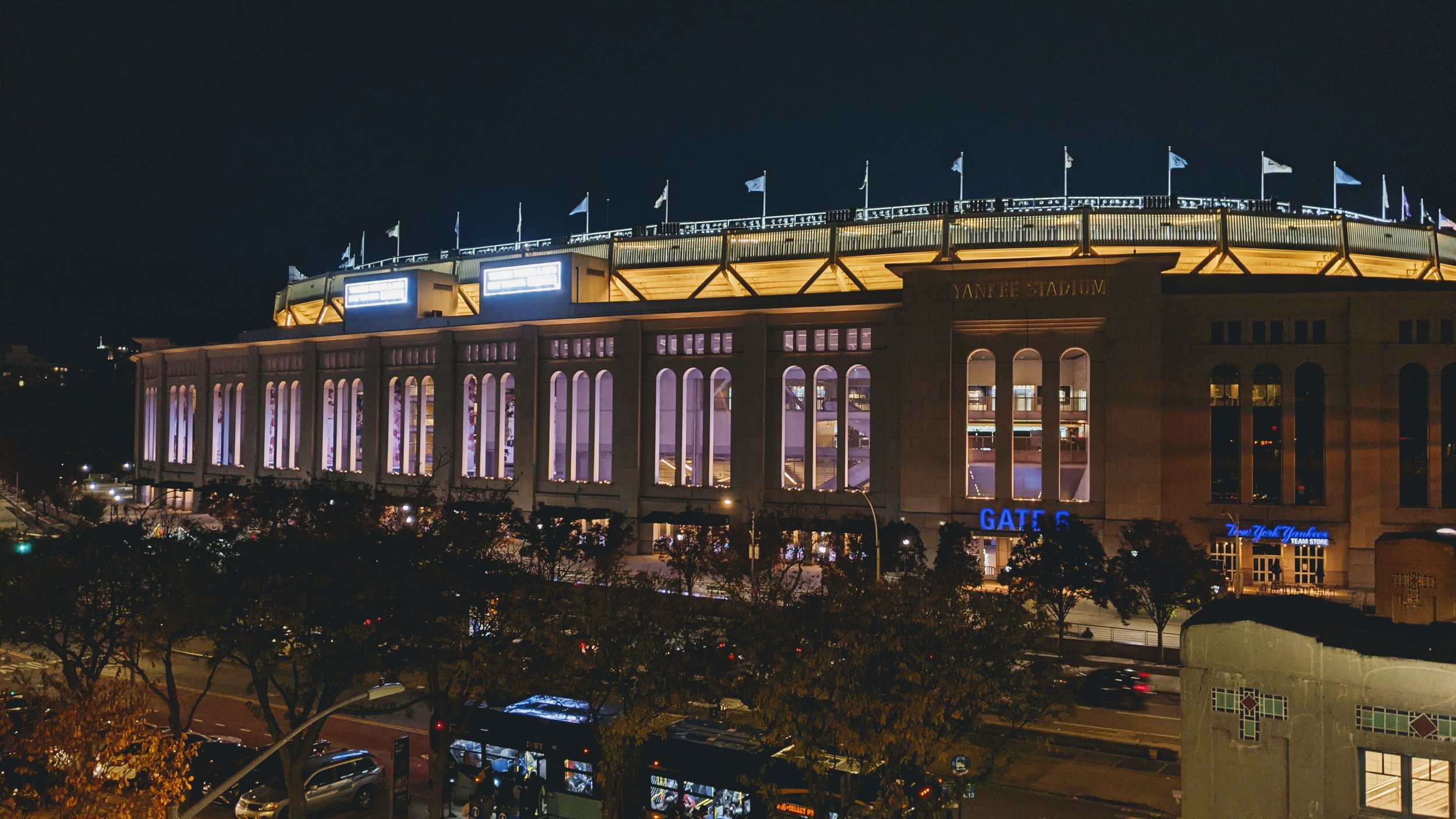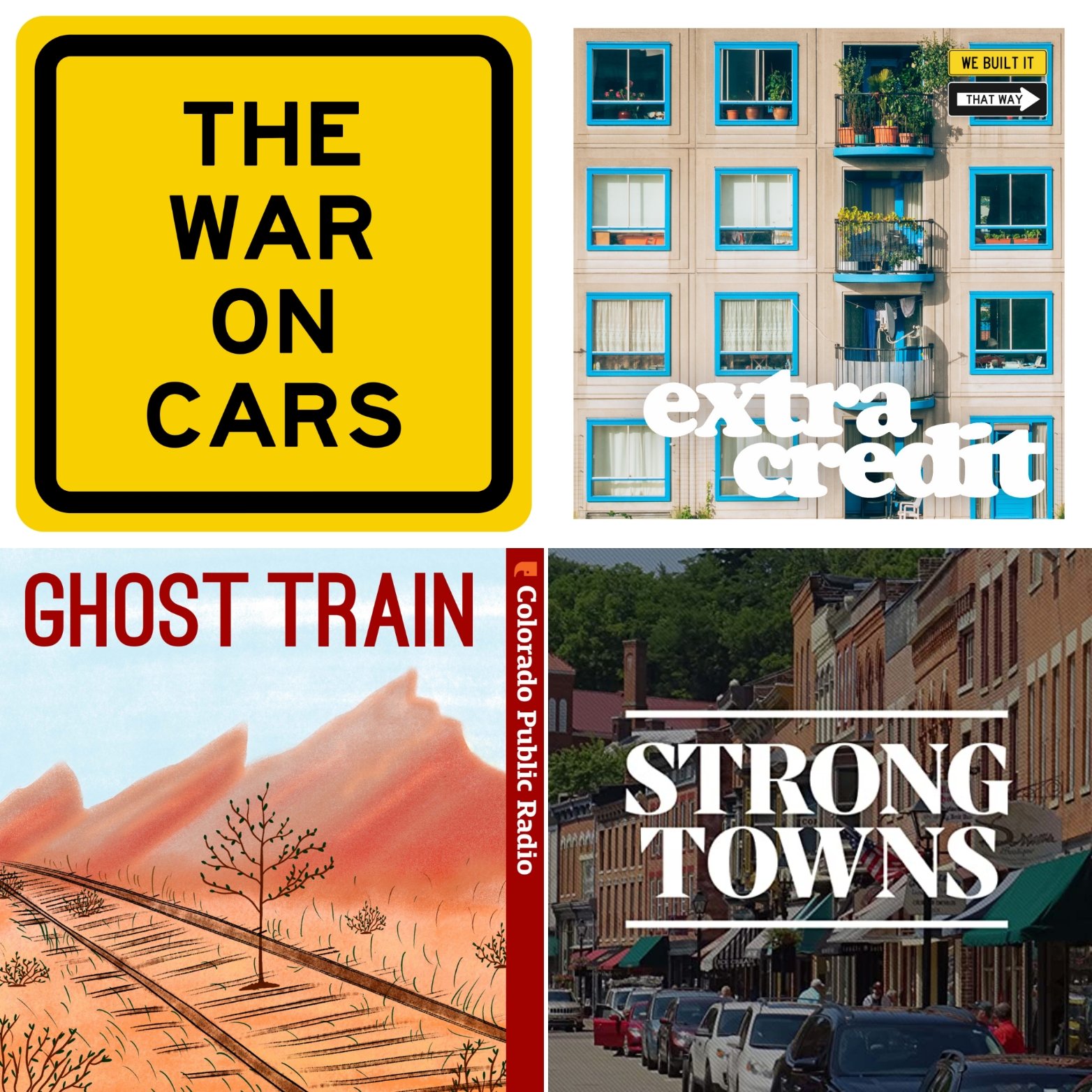I’m hitting a milestone this year - 30 years old - and it seems like the right time to reflect on what brought me to this moment. One of my favorite podcasts, Talking Headways, asks each of their guests “What got you interested in cities?” For those of us in the planning profession, I think this is an excellent question for us to reflect on from time to time. What made us decide that we wanted to dedicate our professional lives to improving the communities we live in? Well, as I look at 30, I think this is the perfect time to reflect on the inspirations that brought me into city planning and maybe encourage others to jump in too. If not professionally, all of us should be looking at the places we live and working to improve it little by little - your home, your street, your neighborhood, your city.
Baseball
Syracuse, being a small- to medium-sized, was still big enough to get a kid interested in cities with all of its historic buildings, easy to walk to parks, and an ever diversifying population. But the real spark of interest came with traveling to much larger cities to catch a baseball game or two - Pittsburgh, Cleveland, Toronto, New York. As anyone who reads this blog has figured out by now, baseball is a truly urban sport, and these yearly trips to great urban ballparks inspired an exploration into cities and their histories. The sights and sounds surrounding the excitement of the games were more interesting to me than the games themselves. Our trips may have been built around baseball games, but they were excuses to experience much, much more. Museums, shows, music - the things that make cities cultural hubs, no matter the size.
On top of that, they were the first experiences using robust transit networks. Riding the subway for the first time was much more exciting than my trips on OnTrack. When the 4 train first comes above ground to reveal Yankee Stadium, the old Yankee Stadium, is one hell of an entrance. OnTrack’s Game Day Express could have had similar vibes, but the low frequency and slow pace made it much more of a novelty than a true transportation option. Even so, I continue to think of ways that OnTrack could be revived into a fully functional system.
But beyond the culture and the transit experiences, it was architecture that first pulled me in.
Architecture
“Nothing is higher than an architect,” according to George Costanza, even if I would later realize that episode was the first time I ever heard of a city planner as a career. At the moment I agreed with him, but there was a lot more to learn. Architecture is what helps shape a place and informs how we can use it. Skyscrapers quickly became an obsession for me, even if Syracuse’s tallest building is only around 330ft tall. The quest to rebuild the World Trade Center site took this interest in skyscrapers even further as I followed all of the design submissions closely. My third grade teacher, Mrs. Bukowski made sure to share with me any newspaper or magazine articles she found about the project. The sheer size of the site and the meaning of the structures was like building a mini city within a city. The whole project was an introduction into modern architecture and city building as a whole. The history of the original towers, how the city grid was disrupted to accommodate the mall, and how the City looked to stitch itself back together after a tragedy.
All of this pushed my interest in cities further, to the point where I decided to build a miniature city of my own. Not quite as detailed as a model train set, but I slowly bought up dollar store model churches and homes, along with miniature models of famous skyscrapers, before building my own creations out of whatever I could find at home. In some ways, the result is similar to the community planning approach laid out in Dream, Play, Build by James Rojas and John Kamp, using whatever I could find to help create my ideal city. Looking back, I had already started to look beyond Costanza’s obsession with architecture and started to focus on how buildings worked together to form spaces and create distinct neighborhoods. Just if I knew city planning was a career.
But maybe that interest in how the built environment influenced us really came from the shows we saw on TV growing up.
Childhood Shows
I won’t get too deep into how the shows of my childhood shaped my thinking about cities, mostly because I’ve already done that. But I can’t skip over just how important the representation presented to kids in the 1990s was. After decades of shows focusing on the suburban experience, suddenly urban settings became popular again. Already Sesame Street was proving that relating to kids living in the city was important and ripe for storytelling. Mr. Rogers, while less urban than Sesame Street, pulled directly from his experiences in Pittsburgh, right down to the trolley reflecting the city’s famous inclines.
Hey Arnold took urban childhood shows to a new level, telling stories that really can’t be replicated in more suburban environments. Still, people think fondly of that fictional city and its distinct neighborhoods. But the urban influences went beyond shows aimed at kids. Seinfeld, Friends, the Cosby Show, Frasier, even Boy Meets World (the college seasons closer to downtown Philly especially) focused on characters in urban environments. We grew up with stories set in cities, so is it really any wonder that our generation has been (somewhat) slower to move to the suburbs than others?
This interest in storytelling did change my initial plans to pursue architecture, instead pursuing film and television production, but in some ways it ended up giving me a wider perspective that would eventually lead me into planning.
Media Production
I ended up pursuing an undergraduate degree in film and animation at the Rochester Institute of Technology, which grew into an interest in eventually working on Sesame Street. One of the side effects of this decision was the opportunity to travel to cities across the country and in Europe. I experienced living and working in DC, New York, and Los Angeles, as well as across Upstate New York. The over reliance of driving in the outer DC suburbs was an eye opening experience for me, and I grew to love riding the metro as a way to avoid it. I did my best to live in LA without a car, opting to ride transit or bike wherever I could. I still believe LA’s metro system is underrated, even if there is definitely room for improvement.
NYC showed me just how freeing it could be living without a car, even if the trains didn’t always sync up with an overnight work schedule. But on my days off, the train gave me a chance to explore almost anywhere in the City for just $2.75. And I made sure to see as much as I could (mostly whatever free events I could find).
But it was my time spent in Albany that started to remind myself why I was interested in cities in the first place. I worked at a 24 hour news station that covered news across the state. Similar stories continually crept up during my time there - dangerous streets leading to crashes that impacted innocent people walking, cities looking for new ways to improve their downtown cores to attract new investments, and a continued focus on preserving the industrial past that once made the cities growing and prosperous.
At the same time, Albany was the first place I lived after the Bronx, which was a giant change. I had gotten used to moving about without a car and walking everywhere. While Albany, and the surrounding Capital Region, had plenty of great urban neighborhoods, the connectivity had been broken up decades ago, much like cities across the country. It led me to wonder why I felt this disconnect. Luckily, Market Block Books in historic downtown Troy had a section of books dedicated to urban planning. The first two books I picked up, that remain two of the most important books I have ever read, include Street Fight by Janette Sadik-Khan and Walkable City by Jeff Speck. It was the first time someone really explained why certain areas, usually the more historic neighborhoods, invited you to spend time while others felt sterile and removed.
Over the next two years, and moves back to Syracuse and then out to LA, I found myself reading any book I could find on the subject. I ended up producing short videos for a city council candidate in Syracuse focused on urban planning issues and ideas. Eventually, while living in LA, I decided that media production wasn’t where my passion was, but instead I wanted to head back east and dive into planning.Within months I was back in NYC studying urban planning at CUNY Hunter College.
Hindsight really is 20-20 sometimes. Looking back, it’s easy to see that urban planning was always going to be my passion. My films and scripts at RIT focused on city environments. An interview at NBC Universal had me continually bringing up impacting communities and being good stewards (probably worked against me when they were looking for creative ways to make money). But I’m happy with the path I took at the same time because it gave me different ways to look at the issues.
So I apologize if this ends up being a long story with an obvious ending, but I hope it gives you a chance to reflect on your own experiences with cities and your city in particular. And if you have an interest to keep reading and exploring, I want to end this post with some recommendations of my favorite books, podcasts, and YouTube channels that have truly helped shape my thinking on the subject. I hope they can inspire and inform you the way they have done so for me.
Book Recommendations
These recommendations will be broken down into a couple different categories . To keep the lists short, I will only be noting my three top choices in each category.
How Our Society is Built
The Sum of Us: What Racism Costs Everyone and How We Can Prosper Together - Heather McGhee
The Color of Law: The Forgotten History of How Our Government Segregated America - Richard Rothstein
There Are No Accidents: The Deadly Rise of Injury and Disaster―Who Profits and Who Pays the Price - Jessie Singer
Active Transportation
Street Fight: Handbook for an Urban Revolution - Janette Sadik-Khan
Walkable City: How Downtown Can Save America, One Step at a Time - Jeff Speck
Building the Cycling City: The Dutch Blueprint for Urban Vitality - Melissa Bruntlett and Chris Bruntlett
Summaries of City Issues
The Death and Life of Great American Cities - Jane Jacobs
Triumph of the City: How Our Greatest Invention Makes Us Richer, Smarter, Greener, Healthier, and Happier - Edward Glaeser
The High Cost of Free Parking - Donald Shoup
Podcast Recommendations
While there are dozens of podcasts I listen to that touch on urban planning subjects, I wanted to give my top five (okay six) that are the most accessible and interesting to a casual listener.
YouTube Recommendations
Similar to podcasts, many YouTube channels focus on urban planning and architecture issues, but here are my top five that will make you want to watch even more.
As a bonus, not just because it had a crossover episode with Not Just Bike but because its one of the most excellent channels on YouTube: Climate Town.

















